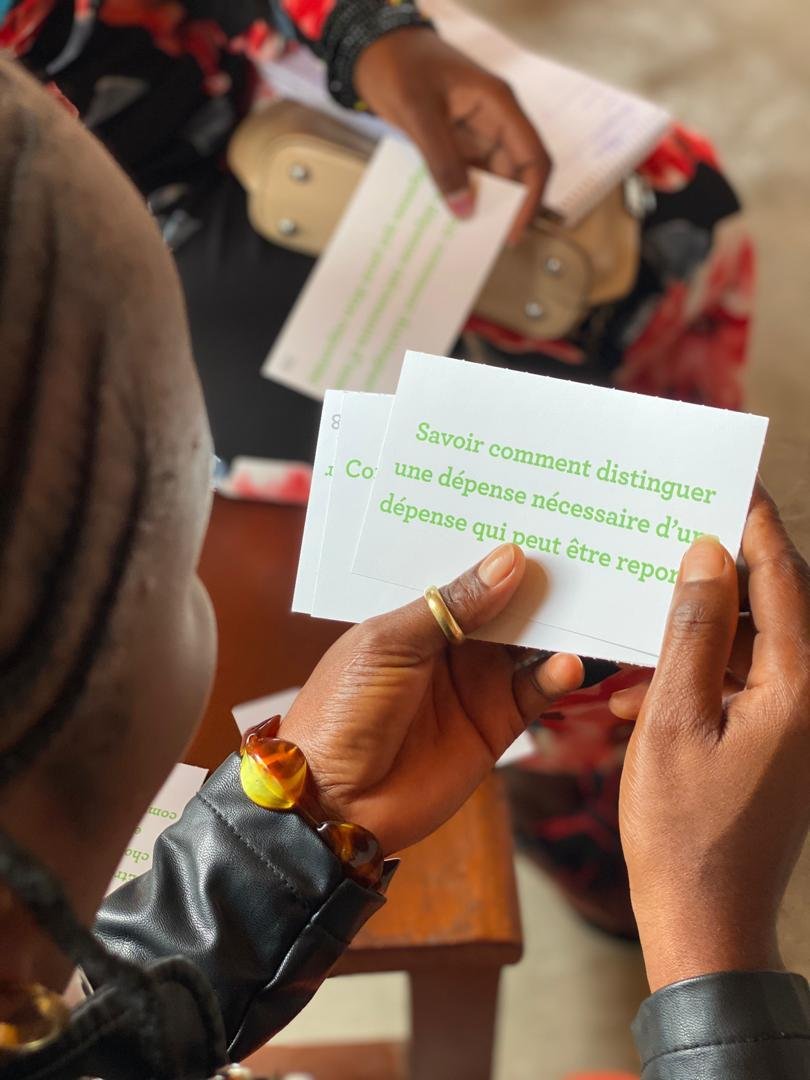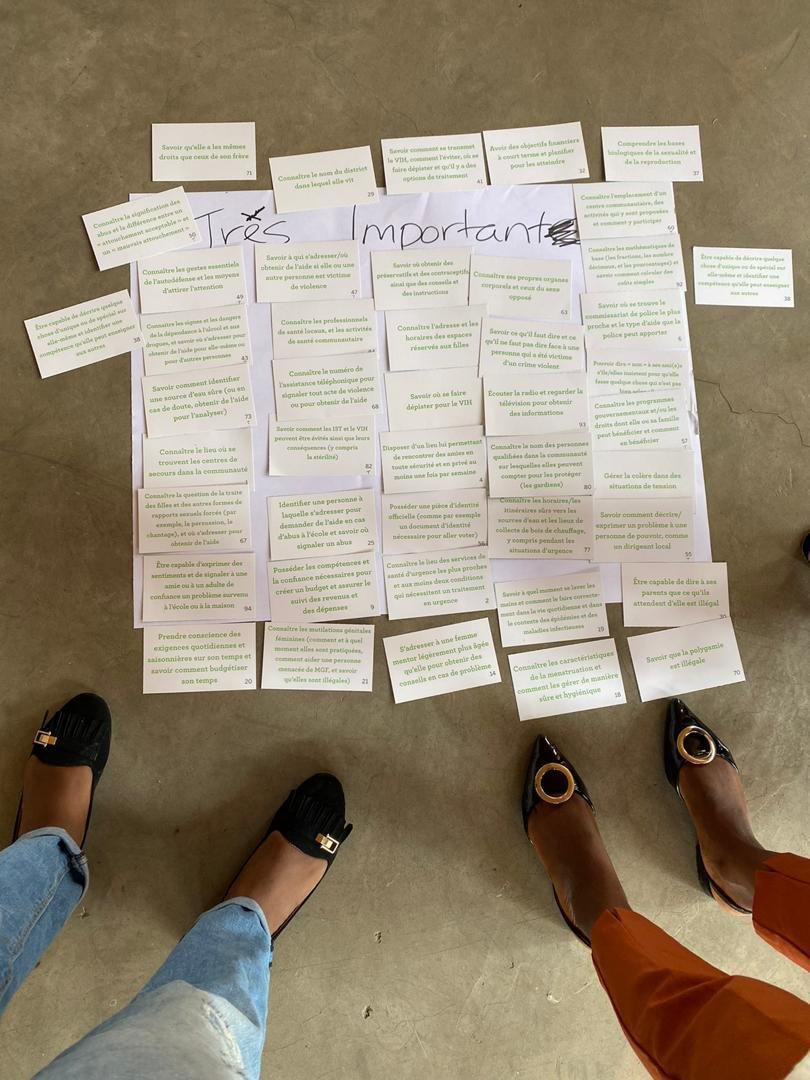Building Assets Collaborative Program Design in Goma, DRC
The building assets participatory exercise: team member Wisline Kasay placing an asset card on the age by which a girl needs to have it, 2020.
“The exercise was a powerful reminder of the importance of starting programs for girls early. The majority of the most important skillsets were identified by the team as being needed around the ages of 10 to 12. ”
Last week we engaged in collaborative program design with our local partner a girls’ arts collective here in Goma DRC in preparation for our Girl Awakening program for girls.
One exercise identifies different skillsets, resources and knowledge that girls need in multiple areas- health, economic, cognitive, social and creative. Team members identified which were most important, and by what age a girl should know them. Developed by the Population Council these are also called “assets.”
The exercise was a powerful reminder of the importance of starting programs for girls early. The majority of the most important skillsets were identified by the team as being needed around the ages of 10 to 12. It is illuminating when comparing this to the results of the community survey tool we did two weeks ago. The survey tool showed that many girls drop out of school, and go “off-track” around this exact age between 10 and 12. Why is there a confluence of need and also of negative life outcomes at this point? It’s exactly the age in which puberty begins and girls start transitioning from being children to adolescents. The exercise and survey tool tell us that girl need to be prepared with a range of “assets” to help them to navigate new threats and opportunities, and that without these skill sets to support them, they may end up facing risks such as dropping out of school early, engaging in transactional sex, of being married and or having children before reaching an age in which they can support the health and well-being of themselves and their children.
A few examples selected by our team that were determined as very important to know by age 10:
Know what abuse is and the difference between a “good touch” and a “bad touch”
Know her own body parts and the body parts of the opposite sex
Be able to identify what beauty means to her
Know the specifics of menstruation and how to safely and cleanly manage it
Have at least three female non-family friends
The exercise will help us in the next steps of program design.
To learn more about the building-assets exercise and Colors of Connection’s contribution to the creative assets deck visit the Population Council’s community of practice website.
Ending on a light note – reactions from the team varied while going over the different assets. The most remarkable one was when asked if they thought it was important for a girl to be able to identify what beauty means to her – and they reacted with the most emphatic and enthusiastic response of “YES.”






